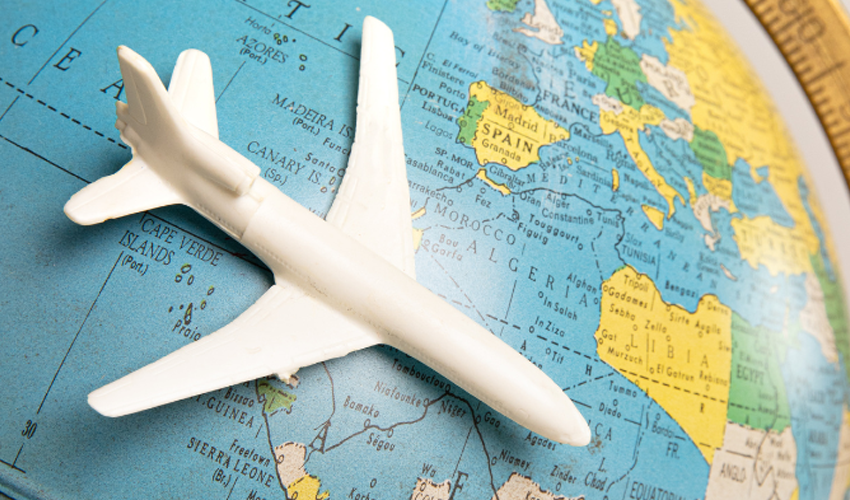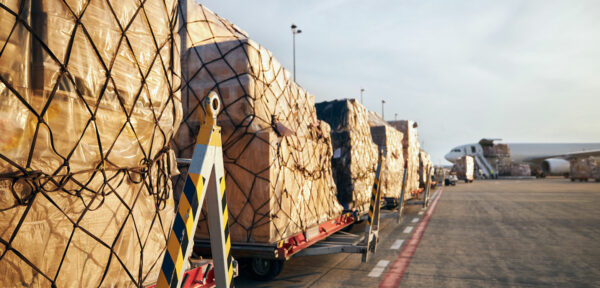Developments are occurring across the aviation industry. We are witnessing changes in passenger market dominance among regions, the air cargo sector potentially beating performance expectations, a new airline leader in on-time performance, and an update in the progress of sustainable aviation fuel production.
ACI Asia-Pacific Projects the Asia-Pacific Region to Fall to Second Largest Air Passenger Market in 2022
China’s stringent border measures coupled with Japan’s caution regarding inbound travel restrictions will likely cause the Asia-Pacific market to drop from its top berth to second place as the largest air passenger market in 2022. The region will fall behind Europe and North America. According to ACI, passenger traffic will only recover by 55% by year-end compared to pre-COVID-19 levels. Other regions, by contrast, will experience a 70-80% recovery.
Keep in mind that in 2019, 3.38 billion passengers traveled by air in Asia-Pacific; a 37% share of the $9.16 billion global market. In 2020, Asia-Pacific had a 1.57 billion market share. Currently, ACI is forecasting a 22% growth over 2021 figures, or 1.84 billion, which is 45% lower than 2019 figures.
ACI is working to reverse the current Asia-Pacific regional conditions by appealing to the authorities in China and Japan. ACI Asia-Pacific Director General Stefano Baronci stated, “The traffic in the region will not be able to fully recover to 2019 levels unless all countries keep their borders open to facilitate freedom of movement. China and Japan – one of the largest contributors to the region’s overall traffic – have been slow in lifting travel and COVID-19 restrictions. We are urging states to take a measured approach to facilitate the recovery in a more sustainable manner and without causing significant impact on their healthcare system.”
Will Air Cargo Beat Performance Projections?
It looks like the air cargo sector might be performing even better than industry observers expected. The chargeable weight gap with last year’s numbers is now the smallest since March. According to data provided by CLIVE Data Services (now part of Xeneta), August 2022 global air cargo volume, capacity load factor, and rates compared to the same periods in 2021 and 2019 were as follows:
Chargeable weight (%)
-4% in 2022 vs. 2019
-5% in 2022 vs. 2021
Capacity (%)
-9% in 2022 vs. 2019
7% in 2022 vs. 2021
Dynamic load factor (%)
-2% pts.in 2022 vs.2019
-7% pts.in 2022 vs. 2021
Rates (%)
+13% in 2022 vs. 2019
+4% in 2022 vs. 2021
Based on CLIVE’s latest data, August air cargo demand was 5% down from a year ago, representing a more modest decline than the June (8%) and July (9%) declines.
Xeneta Chief Airfreight Officer Niall van de Wouw noted, “With a slowdown in global economies expected in the near term, airlines are reporting reductions in their winter schedules, and we are likely to see continued capacity constraints on popular air cargo trade lanes, such as outbound Asia to Europe and North America, and Europe to North America.”


Aviation Industry Experiencing Market Changes
On-time Performance Award Goes to Novoair
Kudos to Novoair for winning a silver award in the best domestic airline category for on-time performance. The airline, which operates daily flights from Dkaka to Chittagog, Cox’s Bazar, Saidpur, Jessore, Sylhet, Rajshahi, and Kolkata, received its award based on an online survey of regular passengers which as organized by Travel and Tourism’s “The Bangladesh Monitor.”
Novoair Head of Marketing and Sales Mes-Bah Ul Islam said, “This recognition will encourage us in the future. Novoair has been committed to providing the highest level of service since its beginning. It has earned passengers’ trust for safe air travel and on-time flight operation. Our commitment to complete passenger satisfaction and superior service will continue at all levels of our operations.”
Sustainable Air Fuel (SAF) Turbine Faces Two Major Challenges Impacting SAF’s Future
Currently, Sustainable Air Fuel (SAF) turbine is facing two major challenges to wider SAF adoption. They are production and cost. SAF is generated from feedstocks (i.e., sustainable resources from which SAF is produced) which can be grown or produced without negatively impacting the environment or creating negative social impacts. Unlike traditional fuels, SAF has much lower lifecycle emissions than conventional fuels. It also potentially can lower emissions by up to 80% over its lifecycle and is intended as an alternative to fossil-based jet fuel used by conventional turbine engines.
From a regional perspective, some areas are better positioned for alternative production pathways and feedstocks which require production methods that need production plants and new technologies to function. With today’s low supply and high demand market conditions, there is a high price premium airlines will have to pay. Now, SAF costs three times the price of conventional jet fuel. Understandably, due to price differentiation, airlines have been reluctant to invest in SAF or enter into long-term contracts.
The International Air Transport Association (IATA) reported that the SAF supply would need to increase from 20.5 million liters to a minimum of 4.49 billion liters per year by 2050 in order for the aviation industry to meet its net-zero goal. For this to happen, collaboration and SAF certificate purchases must occur. SAF partnerships are already underway, however, there remains no established market for purchasing SAF.





0 comments on “Aviation Wrap-Up September 2022”